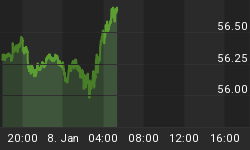Researchers at Brown University have found a way to fine-tune a copper catalyst to efficiently produce complex hydrocarbons — known as C2-plus products — from CO2.
In a study published in the journal Nature Communications, the scientists report that the catalyst can produce C2-plus compounds with up to 72% faradaic efficiency. According to them, this is far better than previously reported efficiencies of other catalysts for C2-plus reactions.
They also report that the preparation process can be scaled up to an industrial level fairly easily, which gives the new catalyst potential for use in large-scale CO2 recycling efforts.
“There had been reports in the literature of all kinds of different treatments for copper that could produce these C2-plus with a range of different efficiencies,” said Tayhas Palmore, a professor of engineering who co-authored the paper with Ph.D. student Taehee Kim. “What Taehee did was a set of experiments to unravel what each of these treatment steps was actually doing to the catalyst in terms of reactivity, which pointed the way to optimizing a catalyst for these multi-carbon compounds.”
Based on previous studies, Kim experimented with a variety of halogenation methods, as this process that coats a copper surface with atoms of chlorine, bromine or iodine in the presence of an electrical potential could increase a catalyst’s selectivity of C2-plus products. After much testing, he zeroed in on which halogen elements and which electrical potentials yielded catalysts with the best performance in CO2-to-C2-plus reactions. He found that the optimal preparations could yield faradaic efficiencies of between 70.7% and 72.6%, far higher than any other copper catalyst.
The researchers say that, ultimately, such a catalyst could aid in large-scale recycling of CO2, for example, at mine sites, power plants and other industrial facilities, to then convert it into other useful carbon compounds.
By Mining.com
More Top Reads From Safehaven.com:

















